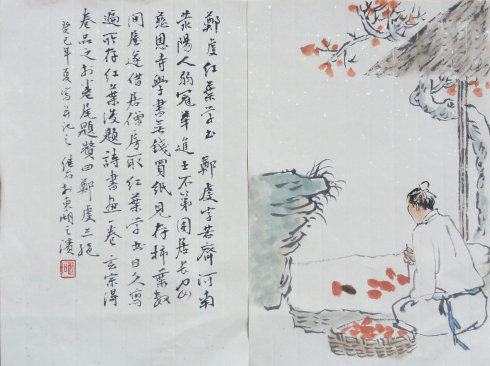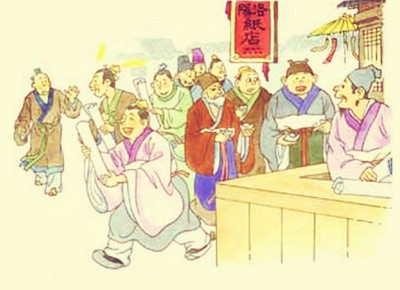CHINESE WISDOM

柿叶临书
Practicing calligraphy on the leaves of persimmon trees
Zheng Qian (691-759), from the Tang Dynasty, was a poet, painter and calligrapher who was hailed as a scholar with encyclopedic knowledge. According to Historical Stories Told by Minister Zhang compiled by Li Chuo at that time, after failing the National Exam in Chang’an when Zheng was young, he was too poor to afford the papers needed to practice calligraphy. When he heard that the Cien Buddhist Temple stored several rooms of leaves from persimmon trees, he begged the masters of the temple to allow him to stay there. He then was able to practice calligraphy on the persimmon leaves every day. As time passed by, all the leaves were full of calligraphic writings. With this industriousness, he became a notable calligrapher of his time.
This story is usually quoted to describe one’s diligence in pursuing knowledge or improving one’s skills.

洛阳纸贵
Paper prices in Luoyang rise
Fu is a form of Chinese rhymed prose that was the dominant literary form during the Han Dynasty. Zuo Si (c.250-305), was a master of this literary form in the Jin Dynasty. According to the Biography of Zuo Si, in the Book of Jin, when writing the Fu on three capitals of the Three Kingdoms, Zuo placed papers in the porch, fence and even toilet so that he could record whenever a sentence came into his mind. After being published, the three Fu works became popular among the general public and everyone was eager to read them. The articles were hand-copied across the capital city of Luoyang so much, that the price of the paper rose because of this.
This story is now usually used to describe the popularity of one’s writings or highly-praised works. For example, in a poem written to his friend, Liu Yuxi (772-842) wrote: “There will be no need to inform me if you come to visit me, the public will know since the price of paper in the city will rise.”
